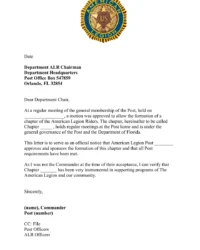Navigating the complexities of reading instruction can feel like an intricate dance, especially when you’re striving to meet the diverse needs of every student in your classroom. From fostering foundational skills to nurturing a deep love for literature, the journey requires thoughtful planning, adaptable strategies, and a clear vision for student growth. That’s where a well-structured lesson plan becomes your most valuable ally, providing a roadmap for effective teaching and learning.
Many educators find themselves searching for reliable frameworks that simplify this process while ensuring comprehensive coverage of reading competencies. The good news is that established educational models, like those from the American Reading Company, offer robust support. Imagine having a clear, intuitive guide that helps you organize your thoughts, sequence your activities, and track student progress with ease. This kind of structured approach not only saves precious planning time but also enhances the overall impact of your reading lessons, making them more engaging and effective for everyone involved.
Understanding the Core Components of an Effective Reading Lesson
Crafting a truly impactful reading lesson goes far beyond simply assigning a book and asking comprehension questions. It involves a systematic approach that addresses various facets of literacy development, from decoding and fluency to deep comprehension and critical thinking. An effective lesson is a carefully choreographed sequence of activities designed to build upon prior knowledge, introduce new concepts, provide guided practice, and offer opportunities for independent application. It’s about empowering students to become active, strategic readers who can navigate diverse texts with confidence and derive meaning from them.
Think about the journey a student undertakes during a reading lesson. It often begins with setting a clear purpose, activating background knowledge, and introducing new vocabulary or concepts crucial for understanding the text. This “before reading” phase is vital for preparing students and scaffolding their learning. During the reading phase, the focus shifts to strategic engagement, whether through shared reading, guided reading groups, or independent reading, with teachers facilitating discussions, modeling reading strategies, and providing immediate feedback. The “after reading” component is equally important, allowing students to consolidate their understanding, respond to the text in various ways, and connect new learning to their broader knowledge base.
A robust lesson plan template, such as an american reading company lesson plan template, inherently guides educators through these stages, ensuring no critical element is overlooked. It prompts you to consider not just “what” to teach, but “how” to teach it effectively, emphasizing differentiation and formative assessment throughout the process. This holistic view ensures that instruction is responsive to student needs, continually adapting to provide the right level of challenge and support. It’s about building a solid foundation in literacy skills that students can carry with them across all subjects and into their lives beyond the classroom.
The structure inherent in a well-designed template also encourages a focus on explicit instruction, meaning that strategies and skills are directly taught and modeled for students, rather than assumed. This clarity is particularly beneficial for students who may struggle with reading or those who are English language learners, as it demystifies the reading process and provides concrete tools for success.
Key Elements to Include in Your Reading Lesson Plan
- Learning Objectives: What specific skills or understandings will students achieve? (e.g., “Students will be able to identify the main idea of a non-fiction text.”)
- Materials: List all necessary books, worksheets, technology, or manipulatives.
- Warm-Up/Hook: An engaging activity to capture student attention and activate prior knowledge.
- Direct Instruction: Explicit teaching of new concepts or strategies, often with modeling.
- Guided Practice: Opportunities for students to practice new skills with teacher support and feedback.
- Independent Practice: Activities for students to apply skills independently.
- Differentiation Strategies: How will you support struggling learners and challenge advanced learners?
- Assessment: How will you check for understanding and monitor student progress? (e.g., exit tickets, observation, written responses.)
- Wrap-Up/Extension: A summary of learning and ideas for continued exploration.
Leveraging the American Reading Company Framework in Your Classroom
The American Reading Company (ARC) is well-known for its comprehensive approach to literacy, emphasizing student engagement, independent reading, and data-driven instruction. Their frameworks often revolve around the idea of building a love for reading while systematically developing skills across various levels. When you’re utilizing an ARC-aligned lesson plan, you’re tapping into a system designed to empower students to choose books that match their interests and reading levels, fostering a sense of ownership over their literacy journey. This philosophy streamlines the planning process for teachers, making it easier to integrate skill-based instruction with opportunities for authentic reading experiences.
An effective american reading company lesson plan template encourages teachers to think about differentiation from the outset. It prompts consideration of how to support students reading below grade level and how to challenge those who are advanced, ensuring that every student receives instruction tailored to their needs. This might involve setting up flexible reading groups, providing varied texts on the same topic, or offering different avenues for demonstrating understanding. The core idea is that reading instruction isn’t a one-size-fits-all endeavor, but rather a dynamic process that adapts to the unique profile of each learner.
By structuring lessons around ARC’s principles, educators can effectively manage a classroom where multiple students are working on different reading levels simultaneously. This framework supports a workshop model where direct instruction is concise, followed by ample time for students to engage in independent reading, small group work, and conferencing with the teacher. It transforms the classroom into a vibrant literacy environment where students are actively engaged in their learning, making choices, and seeing tangible progress in their reading abilities.
Benefits of Using an ARC-Aligned Lesson Plan Template
- Structured Guidance: Provides a clear, organized format for planning, ensuring all essential components of a reading lesson are addressed.
- Focus on Differentiation: Encourages explicit planning for diverse learner needs, helping teachers tailor instruction for every student.
- Promotes Independent Reading: Integrates opportunities for students to choose and read books at their independent reading levels, building fluency and comprehension.
- Streamlines Assessment: Often includes sections for formative and summative assessments, making it easier to track student progress and inform future instruction.
- Saves Time: A consistent template reduces planning time, allowing educators to focus more on instructional delivery and student interaction.
- Builds Cohesion: Ensures consistency in instruction across classrooms or grade levels within a school using the ARC framework.
Developing a strong foundation in reading is one of the most significant gifts we can give our students, opening doors to endless possibilities for learning and personal growth. Thoughtful planning, supported by a clear and adaptable template, transforms the complex task of literacy instruction into a manageable and highly effective process. When teachers feel confident in their planning, they can dedicate more energy to the art of teaching, fostering a dynamic and engaging classroom environment where every student thrives.
Ultimately, the goal is to cultivate not just skilled readers, but lifelong learners who approach texts with curiosity, critical thinking, and joy. By leveraging well-designed instructional tools and frameworks, educators are better equipped to inspire this passion and empower students with the essential literacy skills they need to navigate an increasingly complex world. The effort invested in careful lesson design pays dividends in student achievement and a more fulfilling teaching experience.


